Oral
Acquisition, Reconstruction & Analysis
Wednesday, 26 April 2017
| Room 313BC |
16:15 - 18:15 |
Moderators: Dan Ma, Martin Uecker |
Slack Channel: #s_acq_recon_analysis
Session Number: O65
16:15
|
0932.
 |
Dictionary-free MR Fingerprinting with low-pass balanced-GRE sequences. 
Alessandro Sbrizzi, Tom Bruijnen, Peter Luijten, Cornelis van den Berg
We reconsider balanced gradient-echo (GRE) sequence for MR fingerprinting and design an excitation scheme which is very robust to off-resonance. The corresponding data can be accurately reconstructed by standard least-squares fitting methods, a novelty for MRF. Construction of the pre-computed dictionary and exhaustive search are thus no longer needed.
|
16:27
|
0933.
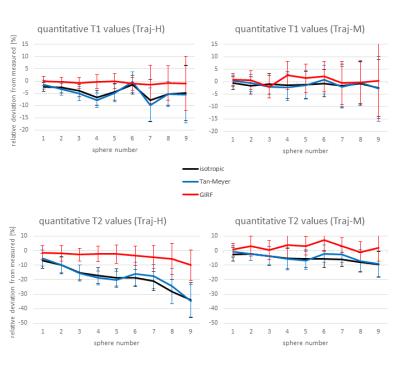 |
Improved spiral trajectory correction using the gradient impulse response function (GIRF) with application to MR Fingerprinting 
Martin Berzl, Antoine Pfeil, Craig Meyer, Adrienne Campbell-Washburn, Gregor Körzdörfer, Mathias Nittka, Andreas Maier, Josef Pfeuffer
The purpose of this study is to evaluate different spiral trajectory prediction models - isotropic, Tan-Meyer and GIRF - to mitigate image artifacts for spiral MRI and improve accuracy of quantitative T1/T2 values for MR Fingerprinting. GIRF scan parameters were optimized to allow a total measurement time of only six minutes for a one-time calibration. GIRF similarly provided excellent results for vastly different trajectory types, varying in max. slew rate, gradient amplitude and number of interleaves, and showed some advantages against Tan-Meyer for trajectory designs with high k-space center slew rate, both for qualitative and quantitative results.
|
16:39
 |
0934.
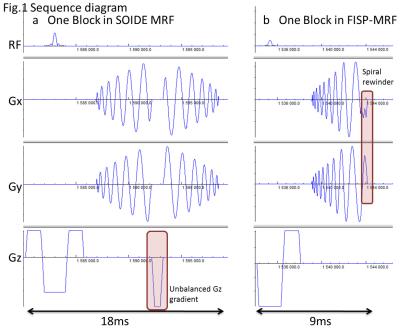 |
Spiral-out and -in Double Echoes (SOIDE) Magnetic Resonance Fingerprinting with Improved T2 Mapping 
Huihui Ye, Congyu Liao, Qing Li, Xiaozhi Cao, Bo Zhao, Berkin Bilgic, Kawin Setsompop, Hongjian He, Huafeng Liu, Jianhui Zhong
Magnetic resonance fingerprinting (MRF) provides fast and simultaneous mapping of parameters including T1 and T2. However, T2 mapping in MRF has been less robust and accurate than T1 in its current form. In this work, we propose a new sequence with spiral-out and -in double echoes (SOIDE) for MRF in each TR block which provide double echo signal with better T2 contrast. The proposed SOIDE-MRF shows improved performance over FISP-MRF, as demonstrated in Monte Carlo simulation on a numerical brain phantom (at Tacq=6s/slice, NRMSE of T2 reduced to 9.41% in SOIDE-MRF, and FISP-MRF ~11% at Tacq=12s/slice) and in vivo brain (less biased and more stable T2).
|
16:51
|
0935.
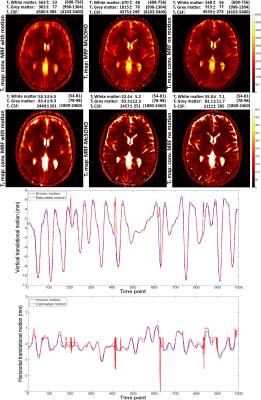 |
Motion corrected Magnetic Resonance Fingerprinting using Soft-weighted key-Hole (MRF-McSOHO) 
Gastao Cruz, René Botnar, Claudia Prieto
Magnetic Resonance Fingerprinting (MRF) estimates multi-parametric maps from a large amount of highly undersampled time-point images. MRF has been shown to be robust to the presence of abrupt motion occurring towards the end of the acquisition. In this work we further study the effects of different types of motion on MRF, showing high sensitivity to periodic motion and motion occurring at the beginning of the MRF scan. A method for 2D translational motion correction in MRF is proposed and validated in vivo, showing significant improvements when compared with no motion correction.
|
17:03
 |
0936.
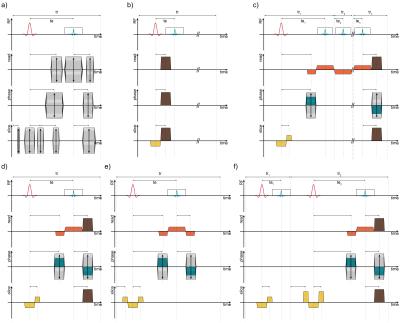 |
On optimizations of MRF patterns based on generalized MRI sequence schemes 
Mathies Breithaupt, Sebastian Flassbeck, Mark Ladd
Within this study, we introduce an MRF pattern generation by the incorporation of a generalized MRI sequence scheme. Optimizations of these patterns lead to a higher matching accuracy and a potential for higher efficiency.
|
17:15
|
0937.
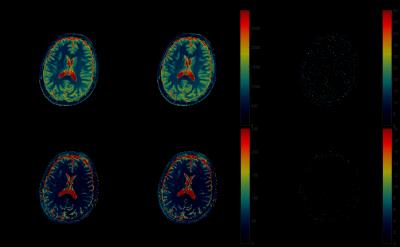 |
Calculation of Large MRF Dictionaries with Low Memory Overhead Using Randomized SVD 
Mingrui Yang, Dan Ma, Yun Jiang, Jesse Hamilton, Nicole Seiberlich, Mark Griswold, Debra McGivney
Direct calculation of MRF dictionaries can be prohibitive when high resolution or multi-component chemical exchange effects are taken into account. To address this problem, we propose a new approach based on the randomized SVD (rSVD) to generate a low rank approximation of the large sized dictionary without the need of pre-calculating, storing, or loading the dictionary. This in return saves significant amounts of memory, and speeds up the template matching process of MRF. In addition, when combined with polynomial fitting, one can generate MRF maps with arbitrary high resolution dictionaries.
|
17:27
|
0938.
 |
Off-Resonance Correction for MR Fingerprinting Using Multiple Frequency Interpolation 
Jason Ostenson, Ryan Robison, Nicholas Zwart, E. Brian Welch
While T1 and T2 parameter mapping using fast imaging with steady-state precession (FISP) magnetic resonance fingerprinting (MRF) has shown consistency with classic relaxometry techniques under static field (B0) inhomogeneity, the use of spiral k-space trajectories blurs parameter map boundaries in regions of high B0 variability. This work shows deblurring in phantom and in vivo relaxation maps generated using a published MRF sequence in conjunction with multi-frequency interpolation (MFI) acquired using undersampled and fully sampled spirals on a 3 Tesla human MR scanner.
|
17:39
|
0939.
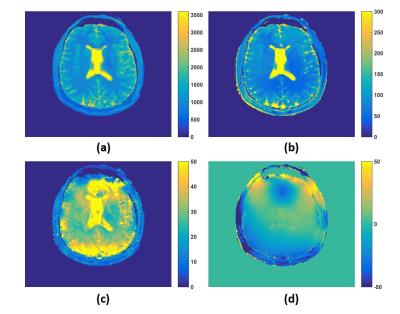 |
Multiparametric T2* MR Fingerprinting 
Cory Wyatt, Travis Smith, Manoj Sammi, William Rooney, Alexander Guimaraes
Previous magnetic resonance fingerprinting studies have focused on T1 and T2 relaxation times, relying solely on flip angle and repetition time changes, leaving the TE as short as possible for optimal SNR and phase. In this study, T1 and T2 MR fingerprinting is extended to include T2* relaxation by varying echo times across acquisitions. The resulting T1, T2, T2*, and B0 maps are then compared to maps obtained with conventional sequences, showing good spatial and quantitative agreement. A novel phase dictionary is used to before the full T1/T2/T2* dictionary to produce B0 maps with fine resolution and reduce computational time.
|
17:51
|
0940.
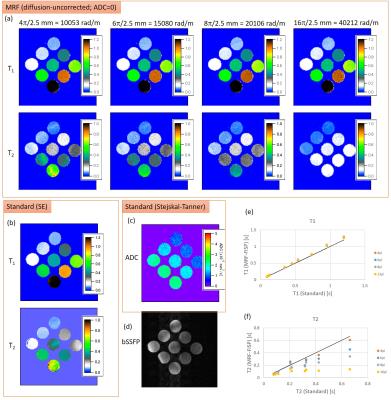 |
Effect of diffusion weighting due to spoiler gradients in MR Fingerprinting 
Yasuhiko Terada, Yuta Kobayashi
MR fingerprinting based on a fast imaging with steady-state precession (MRF-FISP) is immune to banding artifacts due to the inhomogeneous field, and thus has been widely used for rapid quantification of tissue parameters. However, the MRF-FISP could still be affected by banding artifacts for high-field-strengths, insufficient shimming, and wide field-of-view scanners. In such cases, use of much stronger spoiler gradients could alleviate the banding artifacts, but it would increase the diffusion weighting of the spoiler gradients and lead to the underestimation of T2 values. In this study, we examined the effect of the diffusion weighting and showed the correction methods.
|
18:03
|
0941.
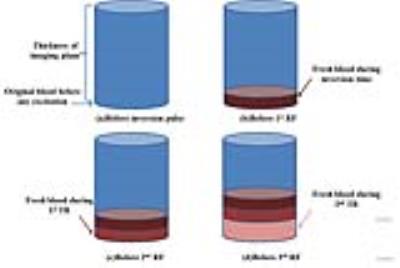 |
A model-based velocity mapping of blood flow using MR fingerprinting 
Xiaozhi Cao, Congyu Liao, Zhixing Wang, Qing Li, Huihui Ye, Ying Chen, Hongjian He, Jianhui Zhong
A hemodynamic mode was embedded into the extended phase graph algorithm for introducing the recognition ability of flow velocity into MR fingerprinting. The results of phantom and in-vivo experiments demonstrate that the proposed method can quantify the flow velocity, T1, T2 and proton density simultaneously.
|
|











